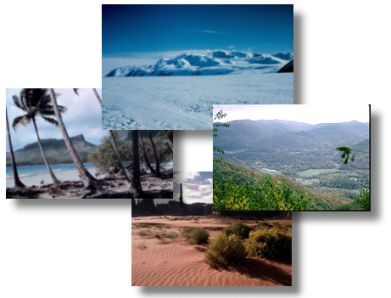Chapter 9
Climate Systems

The climate of Earth is a mosaic of temperature
and moisture patterns that affect the distribution of plants and
animals and shapes the Earth's surface. Much is known about the present
climate patterns of the Earth, yet our understanding of the cause of
these distributions and change that occurs over time is ever unfolding. Not only do geoscientists like climatologists seek
to unravel
the interactions between natural phenomena that determine climate, but
also seek to understand how human activity determines our climate.
Learning Outcomes:
By the end of the chapter you should be able to:
- Explain the difference between weather and climate.
- Compare and contrast empirical, genetic and applied classification systems.
- Describe the major climate classes (A,B,C,D,E) of the Koeppen system of climate classification.
- List and describe the elements of climate.
- Describe the characteristics of global climates and locate them on a world map.
See if you are prepared for this chapter by Getting Ready for Chapter 9: Climate Systems.
You may view a
list of chapter topics by clicking the "Topic Outline" link or
go directly to the first topic by clicking "Continue".
Previous |
Topic Outline |
Continue
|

